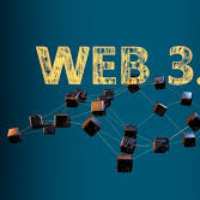The Fundamentals of Web 3.0
Before we explore the financial transactions, it's crucial to understand what Web 3.0 entails. Web 3.0 represents the next phase of the internet's evolution, characterized by decentralized networks, blockchain technology, and artificial intelligence. It focuses on creating a more autonomous and intelligent web, where user privacy and control over data are paramount.
Decentralization: The Core of Web 3.0 :
Decentralization is a key feature of Web 3.0, moving away from the centralized servers that dominate the current web landscape. This shift promises to reduce the control of large corporations over user data and empower individuals with greater ownership and privacy.
Blockchain and Smart Contracts :
At the heart of Web 3.0's financial transactions are blockchain technology and smart contracts. Blockchain ensures transparency and security, while smart contracts automate and enforce agreements without the need for intermediaries.
The Transformation of Financial Transactions :
Web 3.0 is set to disrupt traditional financial systems by offering new ways to transact, invest, and manage money. Let's explore how these transformations are unfolding. Cryptocurrencies: The New Money of Web 3.0 Cryptocurrencies are perhaps the most well-known financial innovation of Web 3.0. Digital currencies like Bitcoin and Ethereum are changing the way we think about money, offering a decentralized alternative to government-issued currencies.
Tokenization: Ownership for the Digital Age :
Tokenization is another revolutionary concept in Web 3.0 finance. Assets, both physical and digital, can be represented as tokens on a blockchain, enabling fractional ownership and easy transferability without cumbersome paperwork.
Decentralized Finance (DeFi) :
DeFi is a system where financial products become available on a public decentralized blockchain network, making them open to anyone to use without the need for intermediaries like banks or brokerages. DeFi platforms offer services ranging from lending and borrowing to asset trading and yield farming.
Non-Fungible Tokens (NFTs) :
NFTs are unique digital assets that signify ownership of a specific item or piece of content, such as art, collectibles, or even real estate. They've opened up new avenues for creators to monetize their work and for investors to participate in new asset classes.
The Impact on Financial Institutions and Services
Financial institutions are beginning to recognize the potential of Web 3.0 to streamline operations and offer customer-centric services.
Banks and Blockchain :
Some banks are exploring blockchain to improve cross-border transactions, reduce fraud, and enhance the security of financial records. This technology offers a new level of transparency and efficiency for banking operations.
Insurance and Smart Contracts :
Insurance companies are looking into smart contracts to automate claim processing, reducing the potential for fraud and human error, and significantly speeding up resolution times for policyholders.
Investment and Asset Management :
Asset management is also experiencing a transformation with the advent of tokenized assets and decentralized exchanges, allowing for more inclusive investment opportunities and reduced barriers to entry.
Challenges and Considerations
Despite the exciting possibilities, the transition to Web 3.0 finance is not without its challenges.
Regulatory Hurdles :
Regulatory frameworks are still catching up to the innovations in Web 3.0. Governing bodies around the world are grappling with how to regulate cryptocurrencies, DeFi platforms, and other digital assets while fostering innovation and protecting consumers.
Scalability and Performance :
The current blockchain infrastructure has limitations in scalability and performance. High transaction costs and slow processing times are significant barriers that need to be addressed for widespread adoption.
Privacy and Security :
While Web 3.0 offers enhanced privacy and security, it also raises concerns. The immutable nature of blockchain can be a double-edged sword, making it difficult to rectify mistakes or fraudulent activities once they are recorded.
The Future of Finance in Web 3.0
Looking ahead, the evolution of financial transactions in Web 3.0 is poised to continue at a rapid pace.
Interoperability and Integration :
For Web 3.0 to reach its full potential, different blockchain networks and financial systems will need to work together seamlessly. Interoperability and integration are crucial for creating a fluid, user-friendly experience.
Innovations in Financial Instruments :
We can expect to see further innovations in financial instruments, including more sophisticated DeFi products, hybrid securities, and new forms of digital assets tailored to the needs of both consumers and enterprises.
The Role of Artificial Intelligence :
Artificial intelligence will play an increasingly significant role in Web 3.0 finance, from personalized financial advice to automated trading strategies and risk management.
Preparing for the Shift :
As we stand on the cusp of a new era in financial transactions, individuals and businesses alike must prepare for the shift.
Education and Awareness :
Understanding the intricacies of Web 3.0 and its financial mechanisms is essential. Education and awareness will empower users to navigate this new landscape confidently and safely.
Strategic Investment :
Investing in blockchain infrastructure, partnerships with fintech startups, and research into emerging technologies will be critical for traditional financial players looking to stay ahead in the Web 3.0 world.
Embracing Change
Embracing change and being open to innovation will be necessary for success in the Web 3.0 era. Flexibility and adaptability will be the hallmarks of those who thrive in this new financial ecosystem.
Conclusion :
The evolution of financial transactions in Web 3.0 is reshaping our understanding of money, value, and commerce. With its promise of decentralization, transparency, and efficiency, Web 3.0 has the potential to democratize finance and offer new opportunities for growth and innovation. As we navigate this transition, staying informed, engaged, and proactive will be key to harnessing the benefits of this exciting new chapter in the digital economy.

